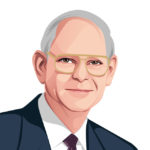
It is generally recognized that the senior living business is becoming more complex with increasing need for operational sophistication and innovative best practices. The senior living continuum of products and services is growing. There is a pressing need to optimize the financial viability of existing communities through revenue enhancement and expense reduction.
Yet in spite of these generally recognized complexities and challenges, many sponsors and owner/operators still focus exclusively on tracking and evaluating their financial position on a broad consolidated basis. This is a great big-picture summary approach, but the true financial dynamics and sensitivity of the organization must address the development of individual cost and profit centers within the continuum. Simply combining three or four businesses within a community into one simple consolidated income statement of revenues and expenses is not the best practice for the future. In reality, each of these major product and service businesses should meet reasonable industry financial benchmarks of:
1. Revenue
2. Expenses
3. Net operating income
4. Profit margins
5. Cash flow
Each cost center must initially stand alone before being merged into the consolidated financial statement. Just using consolidated financials can frequently mask unacceptable subpar performance of one cost center, while penalizing another one.
Clearly owner/operators must provide a seamless consolidated continuum of products and services for their aging residents. But this consolidated continuum is really composed of a number of individual business models with unique challenges and opportunities. Each key element of this continuum must first be segmented as standalone cost and profit centers and then (and only then) combined to track the results on a consolidated basis. Each business element must be successful individually.
Let’s take a look at a typical example. One of my clients operates a comprehensive CCRC that has independent living, assisted living/dementia/memory care, nursing/rehabilitation and assistance-in-living/wellness as major components in their seamless continuum for their residents. These components have each been segmented as these standalone profit centers. Individual income statements exist for each one. These individual income statements include earned operating revenues, operating expenses including direct costs and an appropriate overhead allocation that applies to that cost center, individual net operating income, profit margin and cash flow. These financial statements also include monthly and year-to-date budget versus actual results and, where appropriate, a discussion of why variances occur.
This approach also quantifies and enhances the objective assessment of key staff member performance. Coupled with resident satisfaction scores, this provides an objective criteria for addressing important initiatives.
The senior living continuum is becoming more complex, with services like comprehensive assistance-in-living within independent living, geriatric assessment, memory care and external continuing care at home. Financial performance sensitivity is also increasingly putting more pressure on profits, debt service coverage and capital investment needs impacting overall cash flow for aging physical plants.
The standalone cost and profit center is a concept whose time has arrived. It is already being implemented by progressive sponsors and owner/operators. The benefits include sharpened pricing, focused cost controls and potential overhead cost reduction. Finally, the concept is fast becoming a key element of a state-of-the-art business practice.
Jim Moore is president of Moore Diversified Services Inc., a national senior housing and healthcare consulting firm based in Fort Worth, TX.




